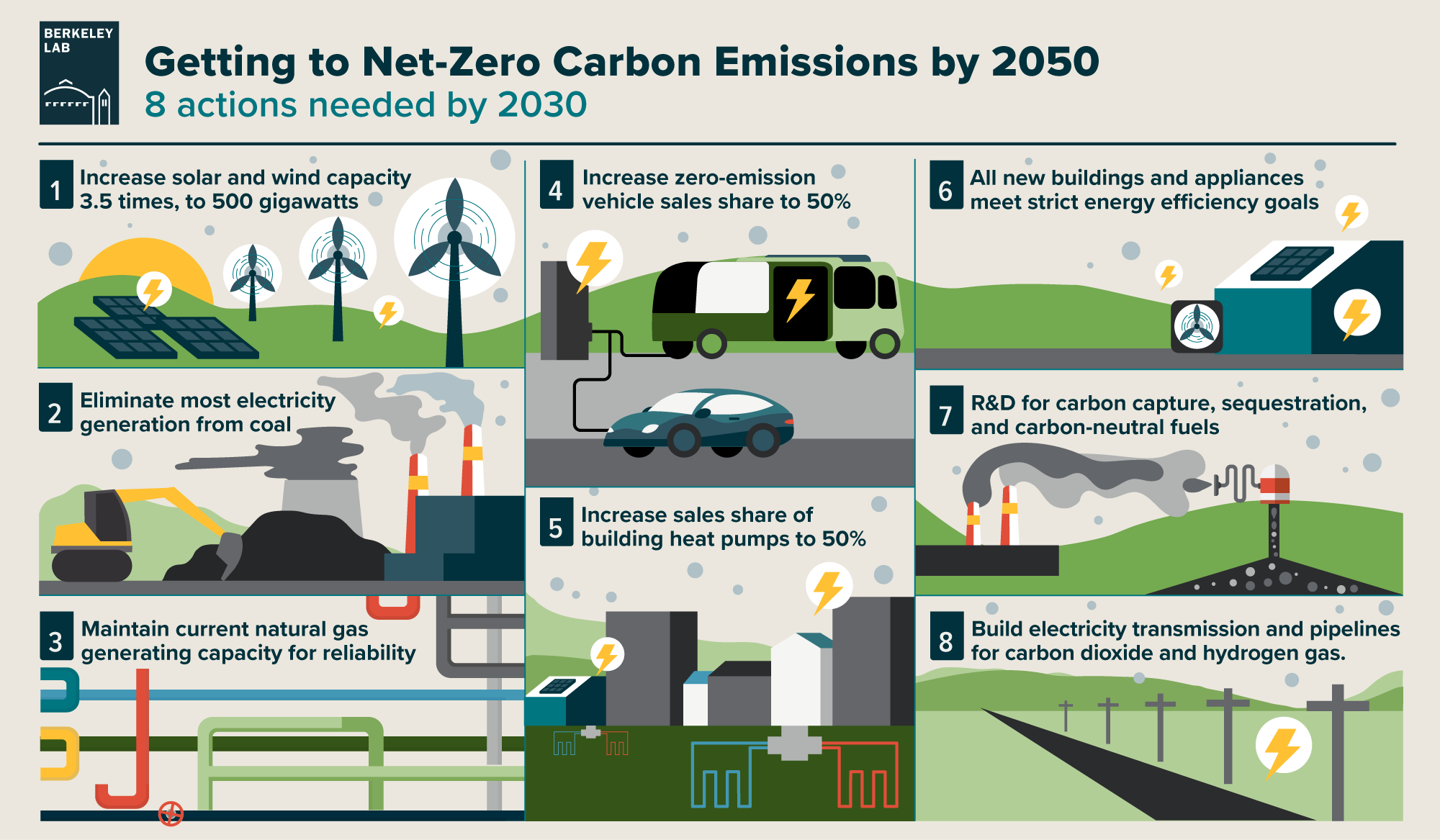Earth Day 2022: Climate Change Solutions
Happy Earth Day 2022. Are you ready to move from Climate Anxiety to Climate Solutions? Click the gallery below. It is no secret that we face considerable challenges per the latest IPCC Report, which noted that “climate change is already impacting every corner of the world, and much more severe impacts are in store if we fail to halve greenhouse gas emissions this decade and immediately scale up adaptation.” The report notes that it is “likely that the proportion of all terrestrial and freshwater species “at very high risk of extinction will reach 9% (maximum 14%) at 1.5C”. This rises to 10% (18%) at 2C and 12% (29%) at 3C.” It is easy to get stressed and anxious about Climate Change but we have to shift the focus to solutions. On that front, we have never had so many solutions that are readily available — the ClimateTech and Energy Transition is fully underway. We cannot be paralyzed by Climate Anxiety — we must focus on Climate Action.
Click on the gallery below for are some useful graphics outlining the various solutions.
EDITOR’S NOTE: TBG Purpose is a leading Corporate Social Responsibility (CSR)/Sustainability partner for corporations, institutions and governments. We provide an integrated set of solutions and enable organizations to meet their Sustainability and ESG objectives in line with the SDGs and global reporting standards and frameworks. Get in touch with our team for a free TruePurpose Sustainability Assessment and find out your TruePurpose Score.




Following are some of the top ten solutions as noted in the Scientific American:
“The enormity of global warming can be daunting and dispiriting. What can one person, or even one nation, do on their own to slow and reverse climate change? But just as ecologist Stephen Pacala and physicist Robert Socolow, both at Princeton University, came up with 15 so-called "wedges" for nations to utilize toward this goal—each of which is challenging but feasible and, in some combination, could reduce greenhouse gas emissions to safer levels—there are personal lifestyle changes that you can make too that, in some combination, can help reduce your carbon impact. Not all are right for everybody. Some you may already be doing or absolutely abhor. But implementing just a few of them could make a difference.
Forego Fossil Fuels—The first challenge is eliminating the burning of coal, oil and, eventually, natural gas. This is perhaps the most daunting challenge as denizens of richer nations literally eat, wear, work, play and even sleep on the products made from such fossilized sunshine. And citizens of developing nations want and arguably deserve the same comforts, which are largely thanks to the energy stored in such fuels.
Oil is the lubricant of the global economy, hidden inside such ubiquitous items as plastic and corn, and fundamental to the transportation of both consumers and goods. Coal is the substrate, supplying roughly half of the electricity used in the U.S. and nearly that much worldwide—a percentage that is likely to grow, according to the International Energy Agency. There are no perfect solutions for reducing dependence on fossil fuels (for example, carbon neutral biofuels can drive up the price of food and lead to forest destruction, and while nuclear power does not emit greenhouse gases, it does produce radioactive waste), but every bit counts.
So try to employ alternatives when possible—plant-derived plastics, biodiesel, wind power—and to invest in the change, be it by divesting from oil stocks or investing in companies practicing carbon capture and storage.
Infrastructure Upgrade—Buildings worldwide contribute around one third of all greenhouse gas emissions (43 percent in the U.S. alone), even though investing in thicker insulation and other cost-effective, temperature-regulating steps can save money in the long run. Electric grids are at capacity or overloaded, but power demands continue to rise. And bad roads can lower the fuel economy of even the most efficient vehicle. Investing in new infrastructure, or radically upgrading existing highways and transmission lines, would help cut greenhouse gas emissions and drive economic growth in developing countries.
Of course, it takes a lot of cement, a major source of greenhouse gas emissions, to construct new buildings and roads. The U.S. alone contributed 50.7 million metric tons of carbon dioxide to the atmosphere in 2005 from cement production, which requires heating limestone and other ingredients to 1,450 degrees Celsius (2,642 degrees Fahrenheit). Mining copper and other elements needed for electrical wiring and transmission also causes globe-warming pollution.
But energy-efficient buildings and improved cement-making processes (such as using alternative fuels to fire up the kiln) could reduce greenhouse gas emissions in the developed world and prevent them in the developing world.
Move Closer to Work—Transportation is the second leading source of greenhouse gas emissions in the U.S. (burning a single gallon of gasoline produces 20 pounds of CO2). But it doesn’t have to be that way.
One way to dramatically curtail transportation fuel needs is to move closer to work, use mass transit, or switch to walking, cycling or some other mode of transport that does not require anything other than human energy. There is also the option of working from home and telecommuting several days a week.
Cutting down on long-distance travel would also help, most notably airplane flights, which are one of the fastest growing sources of greenhouse gas emissions and a source that arguably releases such emissions in the worst possible spot (higher in the atmosphere). Flights are also one of the few sources of globe-warming pollution for which there isn't already a viable alternative: jets rely on kerosene, because it packs the most energy per pound, allowing them to travel far and fast, yet it takes roughly 10 gallons of oil to make one gallon of JetA fuel. Restricting flying to only critical, long-distance trips—in many parts of the world, trains can replace planes for short- to medium-distance trips—would help curb airplane emissions.
Consume Less—The easiest way to cut back on greenhouse gas emissions is simply to buy less stuff. Whether by forgoing an automobile or employing a reusable grocery sack, cutting back on consumption results in fewer fossil fuels being burned to extract, produce and ship products around the globe.
Think green when making purchases. For instance, if you are in the market for a new car, buy one that will last the longest and have the least impact on the environment. Thus, a used vehicle with a hybrid engine offers superior fuel efficiency over the long haul while saving the environmental impact of new car manufacture.
Paradoxically, when purchasing essentials, such as groceries, buying in bulk can reduce the amount of packaging—plastic wrapping, cardboard boxes and other unnecessary materials. Sometimes buying more means consuming less.
Be Efficient—A potentially simpler and even bigger impact can be made by doing more with less. Citizens of many developed countries are profligate wasters of energy, whether by speeding in a gas-guzzling sport-utility vehicle or leaving the lights on when not in a room.
Good driving—and good car maintenance, such as making sure tires are properly inflated—can limit the amount of greenhouse gas emissions from a vehicle and, perhaps more importantly, lower the frequency of payment at the pump.
Similarly, employing more efficient refrigerators, air conditioners and other appliances, such as those rated highly under the U.S. Environmental Protection Agency's Energy Star program, can cut electric bills while something as simple as weatherproofing the windows of a home can reduce heating and cooling bills. Such efforts can also be usefully employed at work, whether that means…”
Click > here to continue the article.
